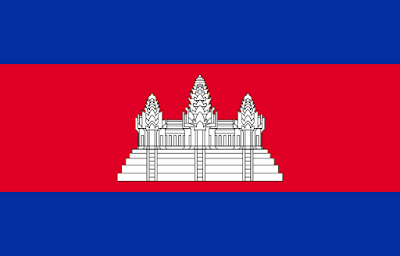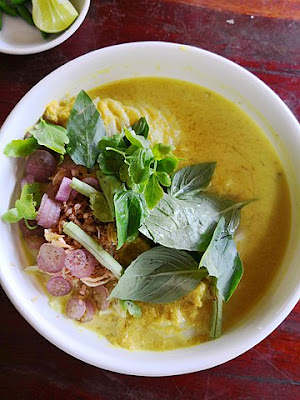Cambodian flag: a symbol of unity and progress
Flags are powerful symbols that represent the identity and aspirations of a nation. The flag of Cambodia, with its distinctive design and vibrant colors, holds deep significance for the country and its people. In this article, we will explore the history, meaning and symbolism behind the Cambodian flag, and how it represents the nation's unity and progress.
A brief History:
The current flag of Cambodia, also known as the "Angkor Wat flag", was adopted on 29 June 1993 after the country emerged from decades of conflict and political upheaval. However, the origin of the flag can be traced back to the era of the Khmer Empire, which flourished between the 9th and 15th centuries. The flag draws inspiration from the majestic temple of Angkor Wat, a UNESCO World Heritage Site and symbol of national pride.
Design and Symbolism:
The Cambodian flag consists of three horizontal stripes of blue, red and blue with a white emblem in the middle. The blue color represents freedom and the ideals of the nation, while the red symbolizes the bravery and blood shed by Cambodians in their struggle for independence. The white symbol represents the temple of Angkor Wat, flanked by two mythical creatures called "giant serpents". The nagas, which are many-headed serpents, are revered in Cambodian mythology and considered protectors of the kingdom.
Angkor Wat symbol reflects the rich cultural heritage of Cambodia and serves as a reminder of the country's glorious past. It also symbolizes the aspirations of the Cambodian people to preserve their cultural identity while moving towards a prosperous and modern future.
Unity and Progress:
The Cambodian flag symbolizes the spirit of unity and progress that has inspired the country since its independence. The blue and red bands, representing freedom and bravery, reflect the courage and determination of the Cambodian people to overcome the challenges they have faced throughout history.
The flag's design also serves as a unifying force, bringing together the diverse ethnic groups that make up the Cambodian population. Regardless of their background or beliefs, Cambodians can rally behind their national flag as a symbol of their shared identity and common goals.
Furthermore, the choice of Angkor Wat as a symbol highlights Cambodia's commitment to preserving its cultural heritage while embracing progress and development. It symbolizes the country's ability to blend tradition with modernity, creating a unique and dynamic society.
The Cambodian flag is not merely a piece of cloth; It is a powerful symbol that embodies the spirit and aspirations of the Cambodian people. It represents their journey from a troubled past to an optimistic future with an emphasis on unity, progress and preservation of cultural heritage. As Cambodia continues to grow and develop, its flag will continue to serve as a reminder of the country's rich history and its people's unwavering commitment to a better tomorrow.
Cambodian cuisine is a delightful mix of flavours, influenced by neighboring countries such as Thailand and Vietnam, as well as its rich cultural heritage. Here are some traditional Cambodian dishes that you must try:
- Amok: Considered the national dish of Cambodia, amok is a savory curry usually made with fish (such as catfish or snakehead fish), coconut milk and an aromatic mixture of spices such as lemongrass, galangal and turmeric. It is usually cooked in banana leaves and served with rice.
- Bai Sach Krauk: A popular breakfast dish, Bai Sach Krauk consists of thinly sliced and marinated pork grilled over charcoal. It is served with jasmine rice, fresh cucumbers and pickled vegetables. The combination of soft grilled pork and fragrant rice is delicious.
- Phnom banh chok: In this traditional Khmer dish, rice noodles are served with a green fish-based curry sauce. It is garnished with an array of fresh vegetables including mint leaves, bean sprouts and cucumbers. Phnom banh chok is a refreshing and delicious option, perfect for lunch or a light dinner.
- Kuy Tew: A popular noodle soup, kuy tew consists of rice noodles served in a savory broth made from pork bones. It is typically made with shredded pork, shrimp, and topped with herbs and spices such as lemon, bean sprouts, and crispy garlic. Cuy teav is a comforting and hearty dish that is often enjoyed for breakfast or as a satisfying meal throughout the day.
- Lok Lak: This Khmer-style stir-fry dish consists of marinated beef (or sometimes chicken or pork) cooked with onions, tomatoes and a hot sauce made from lemon juice and black pepper. It is usually served with steamed rice and topped with a fried egg, making for a delightful combination of flavours.
- Prahok Katis: Prahok is a fermented fish paste that holds an important place in Cambodian cuisine. Prahok cutis is a popular dip made from prahok mixed with pork, coconut milk and various spices. It is often served with fresh vegetables, such as cucumbers, eggplant, and green beans. The dip offers a unique blend of salty, tangy and savory flavours.
- Num Pang: The Cambodian sandwich, known as Num Pang, is a delicious street food option. Similar to Vietnamese banh mi, nuểm pang typically consists of a baguette filled with marinated grilled meat (such as pork or chicken), fresh herbs, pickled vegetables, and a variety of sauces. The result is a delicious combination of texture and flavor.
- Ang detre-meuk: This popular seafood dish includes grilled squid, often served with a spicy lemon sauce. Squid are typically marinated with garlic, lemongrass, and fish sauce before grilling, resulting in a tender and delicious seafood experience.
- Num Kroc: For dessert lovers, Neum Kroc is a must try. These small-sized coconut-rice pancakes are made from a batter of rice flour, coconut milk and sugar, which are baked in small circular molds. They are often served with sweet coconut chutney and can be enjoyed as a snack or as a dessert at the end of a meal.


Comments
Post a Comment